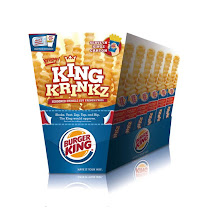
With margins in the retail grocery business thin despite soaring sales as consumers eat more at home (1.84% in the $547.1bn channel according to the Food Marketing Institute), it’s no surprise the chains are looking to innovate, mostly as a means of attracting and keeping the other’s guys customers.
With an average supermarket carrying almost 47K items, offering unique products remains a challenge. Analysts say the average grocery store loses or gains 10% of its customer base in the course of 12 months, so turnover is key. New ideas for wowing shoppers without just cutting prices include “smart” shopping carts that help them find what they want or flash a product review, mobile coupons beamed to your email or cell phone, and self-checkout lanes that give shoppers a sense of empowerment for doing what traditionally a pimply-faced teenager was paid to do for them. let consumers help themselves. Smaller “footprint” stores may be a thing of the future, though so far neither Wal-Mart’s “Marketside” nor Tesco’s “Fresh & Easy” have exactly torn up the channel. In fact, Wal-Mart is rebranding its small footprint operations in Arizona with a new name (“Marketside by Wal-Mart) and a new logo.
Despite the lack of a breakthrough in that format, imitators are poised in the wings, including, Safeway’s “Market,” and Supervalu’s “Urban Fresh.” Not just smaller than the full-sized supermarket, the smaller stores offer more ready-made meals, along with extras like in-store baby-sitting. Profits are supposed to come from repeat business over large bulk buying, though Tesco especially is still struggling to find a winning combination of products and marketing. Minority shoppers are attracting more attention, too, with Wal-Mart’s “Supermercado” and Publix’s “Sabor” catering to Latinos, the largest American minority. Other potential innovations are less about helping the shopper and more for the store’s bottom line: Wal-Mart invested $10MM whipping up “Smart Network,” an in-store television system providing product information and ads on the viewing screens of carts, and Kroger is painting its black checkout conveyor belts with ads. The back-of-the-store hasn’t escaped the innovation trend, either. Wal-Mart was an early adaptor to RFID technology for tracking inventory, and is now using embedded microchips in goods to alert employees when supplies on the shelves are running low, or to tip off the in-store ads to work in tandem with the right products, especially when supported by national TV campaigns. A recent test of the system with Proctor & Gamble kicked sales up almost 20%. Future projects include more private label products (especially in organics) and in-store restaurants at Whole Foods and Wegmans.
Excerpted from BSLG's weekly subscription news reader service Food Business News. To subscribe or for information about licensing, contact Broad Street Licensing Group (tel. 973-655-0598)
.gif)











No comments:
Post a Comment
Note: Only a member of this blog may post a comment.